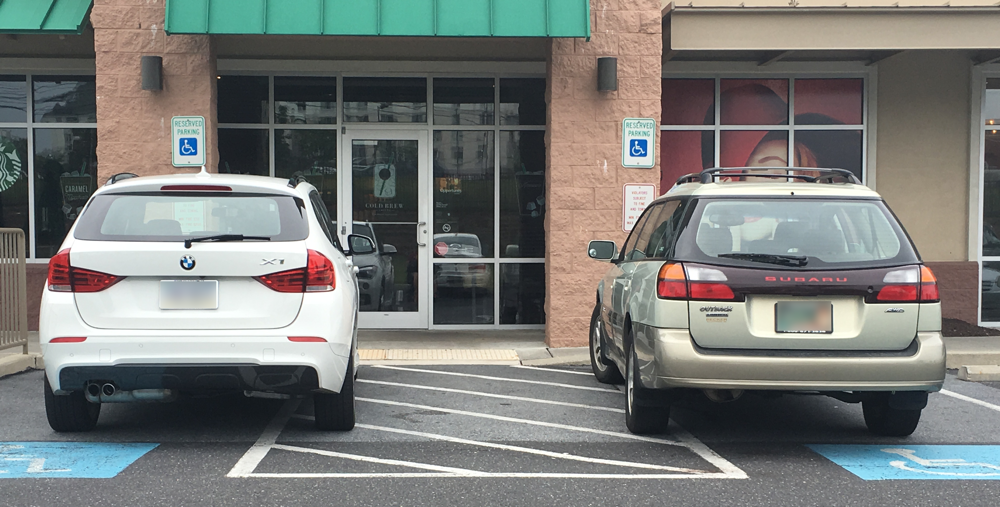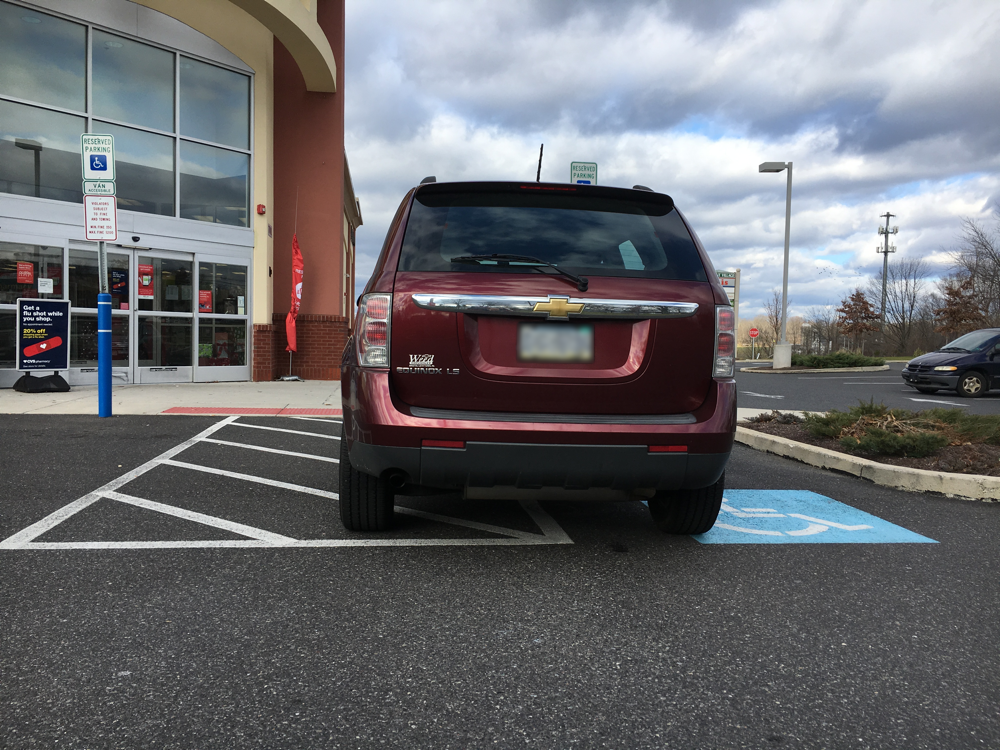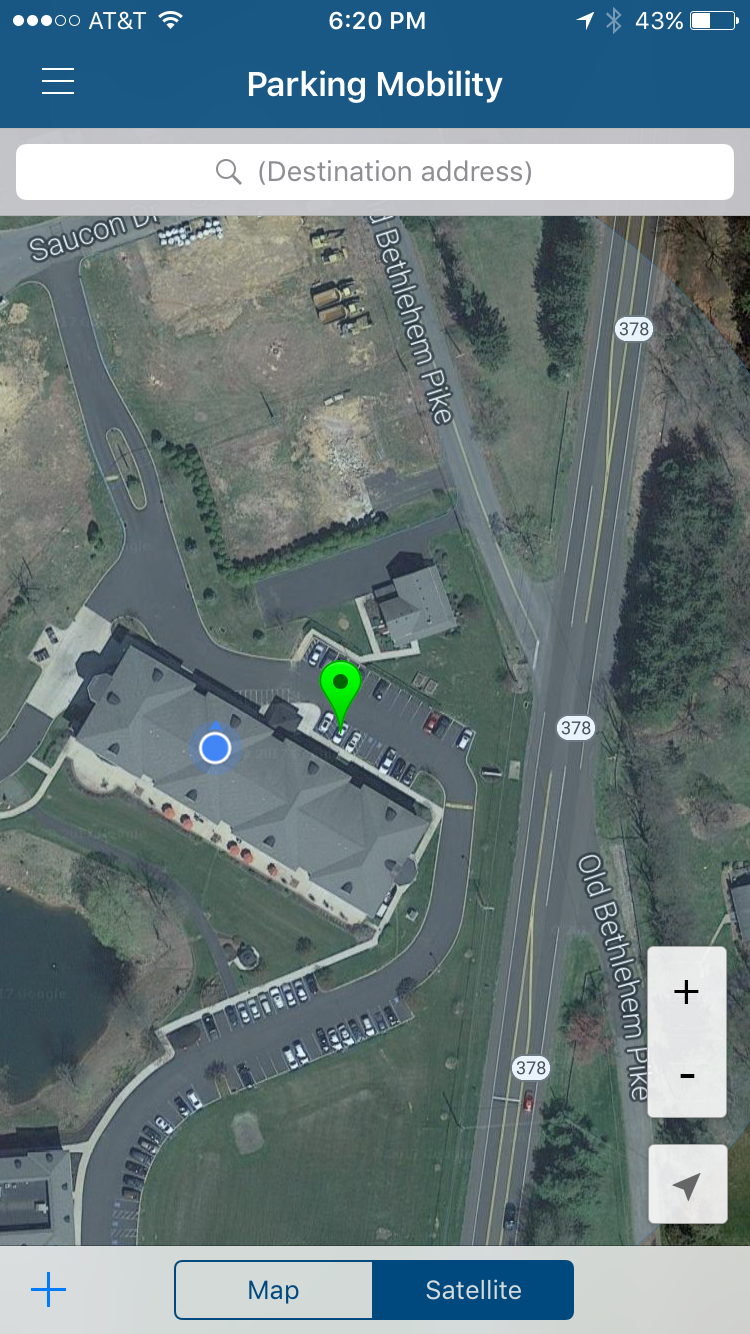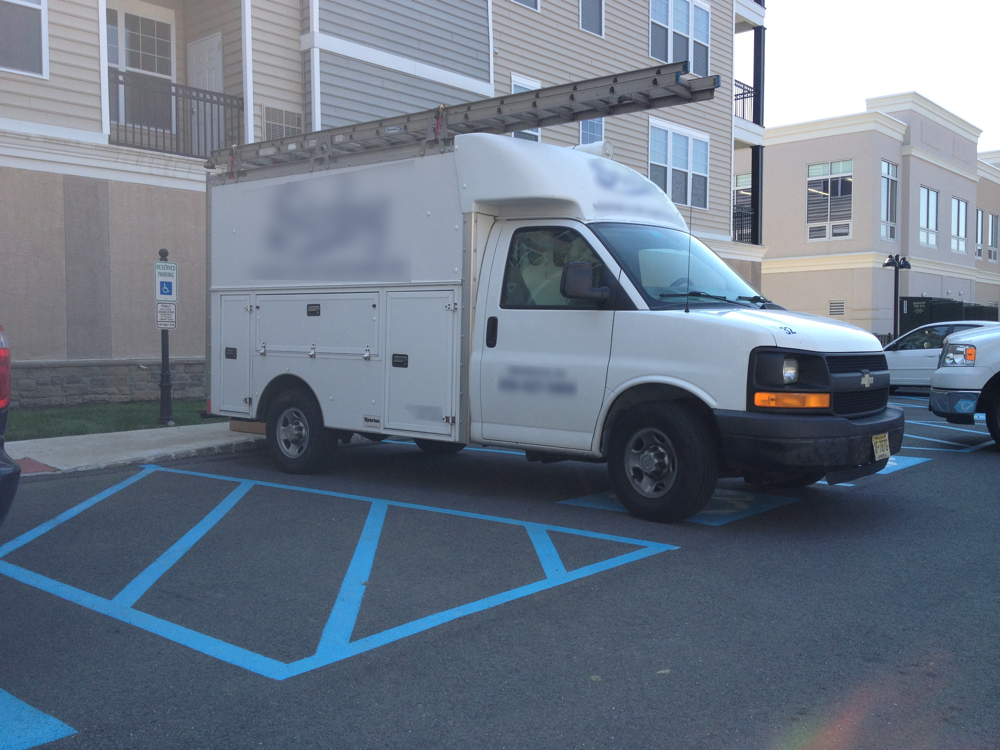I am power wheelchair bound. But that doesn’t stop me from getting out and about. I am fortunate enough to have a conversion van with hand controls and a retractable ramp. This allows me to go to the theater, to dinner, to visit friends, and so on. In fact, I drove halfway across the U.S. several to attend Macstock 2017.
Unfortunately, parking is often a problem. People who have no need for such spaces use them for parking anyhow. The most repeated excuse? “Oh, I was only going in for a minute.” (Purportedly, Steve Jobs was a major violator at One Infinite Loop!) Many people ‘borrow’ a disability hanger that belongs to a family member or friend to enable themselves to use a disability parking space so they don’t have to walk as far to their destination!
And to be fair, it’s not only able-bodied who park illegally. It’s the disabled, as well. Some park in a manner that occupies two accessible spaces.
You could wait for the driver to reappear but that can be a waste of your time, with your point most likely falling on deaf ears. And things can sometimes turn confrontational. Not good.
If you phone the authorities about the incident, the violator will most likely have left by the time the police arrive. And many communities honestly don’t view these violations as a legal matter, only an inconvenience. (I have personally been parked in by vehicles sporting ‘Fraternal Order of Police’ medallions!)
But fortunately, there’s an app to help in such situations (‘natch). It’s called Parking Mobility.

“The solution to accessible parking abuse is much more than just technology, and it’s much more than just enforcement. You have to go deeper; it takes a grass-roots effort
“Parking Mobility recruits, trains and manages your citizen volunteers to help solve the universal problem of accessible parking abuse on the local level. There is no better method to solving a problem than engaging your community on a grass-roots level to have them become a part of the solution.
“Parking Mobility was developed and is operated by the disability community. Our motive is education, not profit. Our 501(c)(3) non-profit mission is to provide the solution to the #1 issue faced by the disability community every day. We do this through education and engaging your community’s participation.”

And the developers of Parking Mobility are most likely all too familiar with the problem. Roughly half of them are wheelchair bound.
The impressive aspect of this app (besides its purpose) is that it has a tutorial that clearly lays out the simple steps to safely report any violation using your smartphone’s camera and their app. As someone who has been confronted with this situation countless times, it’s an intelligent approach to a self-centered situation.

Initially, you register with their site. Here you create your profile, keep track of reported violations that require action, that are open, or that are closed. You can contact them by either phone, fax, or email at their U.S. Headquarters or their Canadian office.
Once you have registered, you then familiarize yourself with operating the app by performing a few “test violations.”
Next, tap on the Menu stripes in the upper left corner of your app. Here you’ll find support, including instructions on how to use the app on your iOS or Android device. There is also a video walking you through the entire process of reporting a violation.

Once you’ve gotten up to speed, you are ready to report your first violation. Tap on ‘Create Violation’ in the Menu and up pops a screen with step-by-step instructions.
First, choose a violation type. Then take three pictures of the illegally-parked vehicle from three specified angles. Next, establish the vehicle’s location on a map.
Finally, move yourself to a safe location and enter the license plate of the vehicle (you’ll find it on one of your pictures) and add any additional comments you would like.
Now press the button to report the offense. Just that simple.
You can then keep track on the actions taken from your reported violation on both the website and the app.
Reporting violations is not the only use for Parking Mobility. You can locate nearby disabled parking spaces, as well.
You can mark a disabled parking space that you have used and may want to use again or inform the rest of the community of its availability. As an example, I marked the space that I regularly park where I reside. The green pin is the chosen parking space while the blue dot is me and my iPhone, inside the building where I am writing this review.

You can view your location in either map or satellite view. You can locate nearby accessible parking with this app, thanks to fellow users. Some of the entries even display the parking fee.
To mark a new space, move and zoom the map to place the spot within the red crosshairs and tap Add Spot. Now everyone knows what’s available nearby.
Unfortunately, cities have to willingly choose to be a part of the Parking Mobility community. The intention is that if your area is not part of the community, enough drivers will report these violations, bringing attention to the size of the problem to the local officials.
If you do not require such an app, I hope that I have stressed how infuriating and exasperating locating accessible parking can be for the disabled and how a grass-roots movement, using relatively basic technology, can seriously improve one’s day-to-day existence. Perhaps for you parking your vehicle is part of your daily routine that you take for granted. Imagine if it was a constant hit-or-miss proposition.

I can’t praise enough the board of Parking Mobility for addressing an issue that is a senseless cause of immense stress. Thank you.
And if you, a loved one, or a friend have to deal with such a situation regularly, I cannot impress upon you enough how important and empowering this app is. As it says on their site: “It’s About Accessibility, Not Disability.”
©2017 Frank Petrie

0 Comments